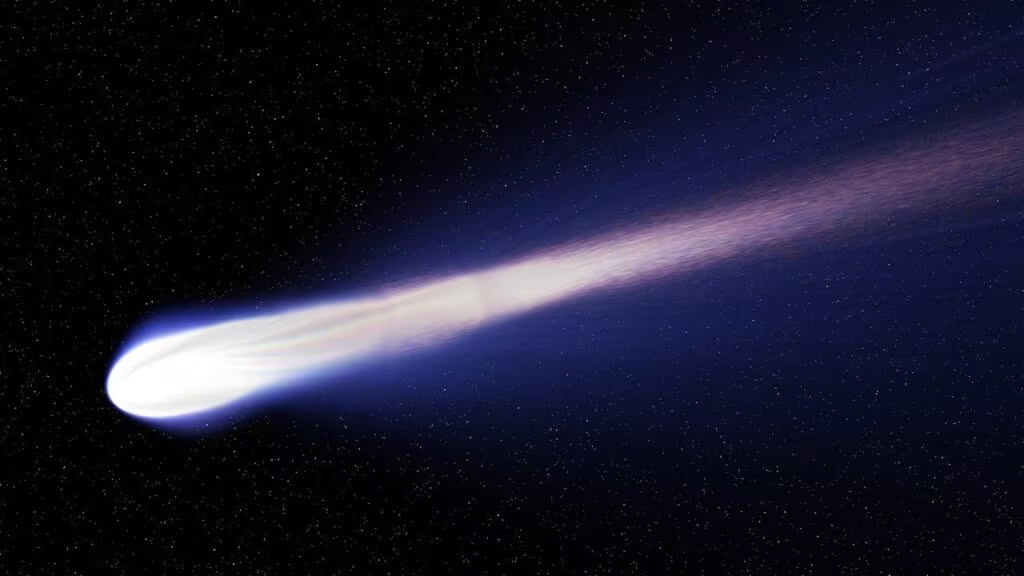The Celestial Trick-or-Treat: A Guide to the Comets of Halloween 2025
For stargazers, Halloween 2025 offers a rare triple feature in the night sky. Three distinct comets—Comet Lemmon, Comet SWAN, and the extraordinary interstellar visitor 3I/ATLAS—are all positioned for viewing, creating a unique opportunity for amateur astronomers and casual observers alike.
While the prospect of three comets sounds spectacular, it is crucial to manage expectations: only one or two will be accessible with standard equipment, and none are expected to be bright, naked-eye spectacles. This guide provides the essential facts, locations, and equipment recommendations needed to successfully track these icy travelers on the night of October 31, 2025.
The Halloween Celestial Lineup: Visibility and Location
Comets are notoriously unpredictable, but based on current orbital mechanics and brightness projections for late October 2025, we can categorize the three visitors by their expected visibility. Visibility is measured in magnitude, where lower numbers indicate brighter objects (the naked eye limit is typically around magnitude +6.5 in dark skies).
1. Comet SWAN (C/2025 S1): The Best Bet for Binoculars
Comet SWAN (an acronym for Solar Wind ANisotropies, the instrument that discovered it) is currently projected to be the most accessible of the trio. It is likely to reach a magnitude that places it within the range of good binoculars or small telescopes.
Key Viewing Details:
- Expected Magnitude: Around +6.5.
- Visibility: Potentially visible to the naked eye under extremely dark conditions, but binoculars are highly recommended for a clear view of the fuzzy coma.
- Location on Oct 31: Positioned high in the evening sky, likely within the constellation Pisces.
- Best Viewing Time: Just after astronomical twilight ends, shortly after sunset, when the comet is highest above the horizon.
Comet SWAN is a periodic comet, meaning it orbits the Sun, and its appearance this year offers the best chance for casual observers to spot a celestial visitor.

2. Comet Lemmon (C/2025 L3): A Challenge for Small Telescopes
Discovered by the Mount Lemmon Survey, this comet is expected to be significantly fainter than SWAN, requiring more specialized equipment and a darker viewing location.
Key Viewing Details:
- Expected Magnitude: Around +8.0.
- Visibility: Requires a small to medium-sized telescope (4-inch aperture or larger) and excellent viewing conditions.
- Location on Oct 31: Located in the eastern sky, likely within the constellation Leo.
- Best Viewing Time: Late evening and into the early morning hours, as Leo rises higher above the horizon.
At magnitude +8.0, Comet Lemmon will appear as a small, faint, fuzzy patch rather than a distinct point of light, distinguishing it from surrounding stars.
The Interstellar Ghost: Tracking 3I/ATLAS
By far the most scientifically significant, yet the most difficult to observe, is 3I/ATLAS. The ‘I’ in its designation stands for Interstellar, confirming that this object originated outside our solar system, making it only the third such object ever confirmed, following ‘Oumuamua and Comet Borisov.
Why 3I/ATLAS is Important
Interstellar objects provide astronomers with pristine samples of material from other star systems. Unlike comets that originate in our Oort Cloud, 3I/ATLAS is traveling on a hyperbolic trajectory, meaning it will pass through our solar system once and never return. Its study offers invaluable data on the composition of matter beyond the Sun’s gravitational influence.
Key Viewing Details (Extreme Difficulty):
- Expected Magnitude: Extremely faint, around +15.
- Visibility: Impossible to see with the naked eye or standard binoculars. Requires a large, professional-grade telescope (10-inch aperture or greater) and specialized CCD imaging equipment.
- Location on Oct 31: Found in the northern sky, likely within the constellation Draco.
- Best Viewing Time: Throughout the night, given its circumpolar location for many northern observers, but optimal viewing requires peak darkness and high altitude.
For the vast majority of observers, 3I/ATLAS remains a target for professional observatories and advanced astrophotographers, but its presence in the same sky as Lemmon and SWAN makes the Halloween display truly unique.

Practical Stargazing Tips for Comet Hunting
Successfully viewing these faint objects requires preparation. Here is a checklist for maximizing your chances on October 31, 2025:
Equipment and Technique
- Binoculars are Key: A good pair of 10×50 binoculars is the minimum requirement for Comet SWAN. They offer a wide field of view, making it easier to locate the comet against the star background than a high-powered telescope.
- Telescope Aperture: For Comet Lemmon, a telescope with an aperture of 4 inches (100mm) or more is necessary. Use low magnification initially to locate the fuzzy patch, then increase magnification to confirm the tail (if visible).
- Star Charts and Apps: Use up-to-date astronomical software (like Stellarium or Sky & Telescope’s resources) to plot the precise celestial coordinates (Right Ascension and Declination) for each comet on the specific date and time you plan to observe.
Mitigating Light Pollution
Comets are diffuse objects, meaning their light is spread out, making them highly susceptible to light pollution. Even a faint glow from a nearby city can wash them out.
- Find a Dark Site: Travel away from urban centers to a location with a Bortle Scale rating of 4 or lower if possible.
- Allow for Dark Adaptation: Give your eyes at least 20 to 30 minutes in complete darkness before attempting to locate the fainter objects. Use a red filter flashlight to preserve night vision.
What to Expect
Unlike the bright, spectacular images often seen in professional photography, comets viewed through amateur equipment typically appear as small, greenish-gray smudges or fuzzy cotton balls. The tail, if visible, will be extremely faint and require averted vision (looking slightly away from the object) to perceive.
Key Takeaways for the Halloween Comet Watch
This Halloween offers a unique opportunity to witness three distinct types of icy wanderers, ranging from the relatively accessible to the scientifically profound.
- Comet SWAN (C/2025 S1) is the primary target for observers with binoculars, offering the highest chance of success.
- Comet Lemmon (C/2025 L3) requires a small telescope and dark skies for detection.
- 3I/ATLAS is an interstellar object—a scientific rarity—but is far too faint for typical backyard viewing, requiring advanced imaging equipment.
- Preparation is Essential: Use star charts, allow for dark adaptation, and prioritize viewing locations far from city lights.

Conclusion: A Rare Alignment of Cosmic Visitors
The presence of three comets simultaneously—especially one that originated from beyond our solar system—is a rare celestial alignment. While the visibility of these objects demands patience and the right equipment, the reward is a tangible connection to the vastness and dynamism of the cosmos. Whether you manage to spot the fuzzy glow of Comet SWAN or simply appreciate the scientific marvel that is 3I/ATLAS, the Halloween sky of 2025 promises a truly memorable astronomical event.
Original author: Anthony Wood
Originally published: October 31, 2025
Editorial note: Our team reviewed and enhanced this coverage with AI-assisted tools and human editing to add helpful context while preserving verified facts and quotations from the original source.
We encourage you to consult the publisher above for the complete report and to reach out if you spot inaccuracies or compliance concerns.

